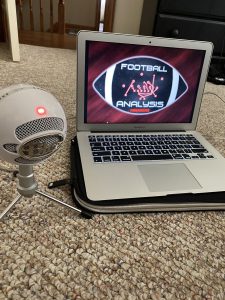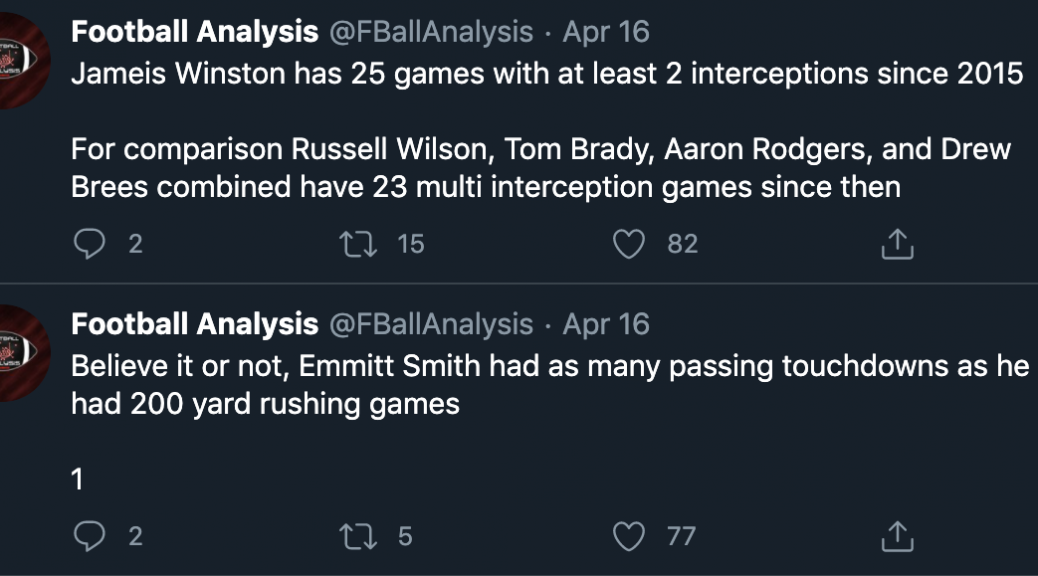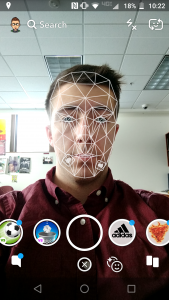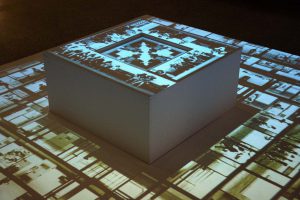Having the same conversation over and over can be tiresome, especially when you’re talking in circles.
One of the most common debates in sports is, “Moss is better than Rice,” or vice versa, and it usually gets nowhere.
That’s why in 2014, Garret Greenlee created a Twitter and YouTube channel where he could prove his sports-related thoughts through facts.
“I got sick of having the same conversation with people like, ‘man this guy’s good, or this guy’s good,’” Greenlee said. “I just created an account and thought whatever happens, happens.”
The accounts grew rapidly.
After four years, Greenlee’s Best NFL Matchups had more than 20,000 followers on Twitter.
Only problem was, he had no idea what email he used when he made the account.
“I was following people way too fast, so Twitter thought I was a spam account,” Greenlee said. “They sent an email to the account I had with it, but I had no idea what that email was, and I lost the account forever.”
Greenlee had to start all over.
Lucky for him, he had a couple friends with similar accounts, and they gave him a shout out to help build his new channel, Football Analysis.
“I only have 1,500 subscribers on YouTube right now. Not ‘only,’ like I’m grateful for them, but I want to get to the point where I’m at 30, 40, 50, 100 thousand subscribers and do a giveaway once a month of a signed whatever,” Greenlee said. “I do appreciate the support, but I want to get to a point where I can use this as a side income just for talking about what I love, which is football.”

How does Greenlee make money with these videos?
“You have to have 1,000 subscribers,” Greenlee said. “But within the past year, you also have to have four thousand watch hours of your content. So that took a little bit to build up.”
Four thousand hours may seem like a lot, but with browse features, you can reach more people than just your subscribers, which happened to Greenlee a few times.
“I have a couple with 30 thousand, 20 thousand views and that really gets a lot of the hours at almost the snap of your fingers,” Greenlee said. “So, in reality you could have one video that has 60 or 100 thousand views, and you get your four thousand hours, then the rest of your videos combined could have only 500 views.”
Since the interview, Greenlee has reached the 2,000-subscriber mark with his new account.
The content is starting to pay off.
He explains this in the video.
Andy Carlson, a Winona State graduate and creator of the Purple FTW! podcast, said a Vikings vs Ravens blizzard game in 2013 sparked his interest in talking sports.
Carlson looks at all the players on the Vikings roster and analyzes the national media coverage of the Vikings, while adding his own twist of humor for his 23,000 subscribers.
“There will always be a market for fan content,” Carlson said. “People want niched down perspective over national media jabronis.”
Here is a clip from a recent video.
With this being his side job, Carlson said he always finds the motivation to release numerous videos a day.
“The viewers who continue to make us part of their day (motivates me),” Carlson said. “If we can be a nice little five minute break from life and give some info and some entertainment. Worth it.”
Carlson offers monthly memberships for $4.99 and $24.99 on his YouTube channel that offers extra benefits such as one-on-one chats and free merchandise.
Teespring has teamed up with Carlson and Purple FTW! to sell this merchandise that includes t-shirts, mugs and stickers.

“It’s a very decent side hustle,” Carlson said. “Merch is fun, and everything helps keep the production lights on.”
With the quarantine giving people more free time than ever, podcasts and YouTube may be a good pass time to listen to, or maybe even try.
Football Analysis Link
https://www.youtube.com/channel/UCjoHPnySKcDbxzaF2R8YM2Q
Purple FTW! Link






